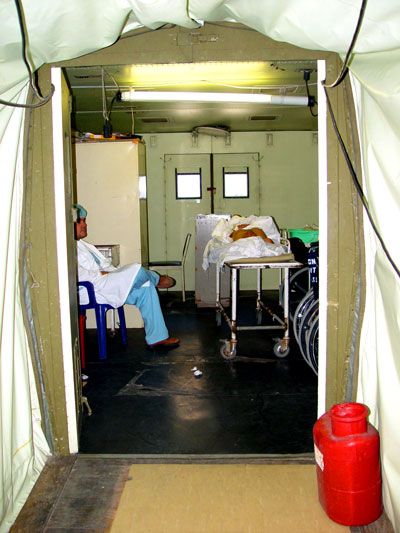World Disaster Reduction Campaign 2008-2009

Foto: © J. Jenkins - OPS/OMS
The World Disaster Reduction Campaign 2008-2009: “Hospitals safe from Disasters: Reduce Risk, Protect Health Facilities, Save Lives”.
During these two years, the secretariat of the United Nations International Strategy for Disaster Reduction (UNISDR), the Pan-American Health Organization/World Health Organization (PAHO/WHO), the International Federation of Red Cross and Red Crescent Societies (IFRC), the United Nations Children’s Fund (UNICEF) and Plan International, with the support of the World Bank’s Global Facility for Disaster Reduction and Recovery (GFDRR), have carried out a number of activities in our region, jointly with governments, regional and international bodies, and non-governmental organizations aimed at raising awareness regarding how and why more efforts should be devoted to protect health facilities and ensure that they continue functioning and are accessible during and after a disaster or an emergency.
Specific actions have been coordinated and undertaken in order to disseminate information and raise awareness among decision-makers, health staff, the academic sector, students and the population at large about the importance of having hospitals safe from adverse natural events. A number of workshops and conferences have been held around this issue, and a variety of products and tools have been developed, such as the Hospital Safety Index, a multimedia DVD titled “Virtual Journey through a Safe Hospital”, and a guide on safe hospitals to be used by communities. In addition, an article and photo contest was organized in the context of the world campaign.
Numerous articles have been posted online and published in newspapers throughout the region. Furthermore, in 2008, the International Day for Disaster Reduction was observed in many countries with activities related to the main theme of the campaign. PAHO also devoted the World Health Day 2009 to the safety of health facilities, reinforcing the main goals of the campaign and giving more visibility to this issue.
The importance of hospitals and all types of health facilities goes beyond their direct purpose and role of saving lives. These facilities are also powerful symbols of social progress. The World Disaster Reduction Campaign 2008-2009 has work primarily on actions aimed at protecting both patients and health workers by ensuring the structural resilience of health facilities. The campaign has also sought ways to ensure that health services and facilities continue functioning and are available in the aftermath of emergencies and disasters, when they are most needed. Through the campaign, health workers have also been able to build or improve their risk reduction capacity. Finally, some activities aimed at raising awareness about people’s rights to have safe hospitals and on the importance of health facilities in every community.
The main lesson learned from the campaign is that the most expensive hospital is the one that fails. Both hospitals and health facilities represent a significant investment in any country. Hence, their destruction imposes major economic burdens. All disasters include health-related problems and any damage to health system affects all sectors of society and nations as a whole.
It is possible to protect the most important health facilities against disasters through risk reduction when designing and building these facilities, and by reducing the vulnerability of those that already exist through retrofitting processes. Health workers are key agents to identifying potential health risks from natural hazards, and promoting risk reduction measures both at the personal and community level. It must be kept in mind that people themselves are the main actors in the field of disaster prevention, since well organized, informed and better prepared communities are more resilient and have greater recovery capacity after a disaster strikes.





